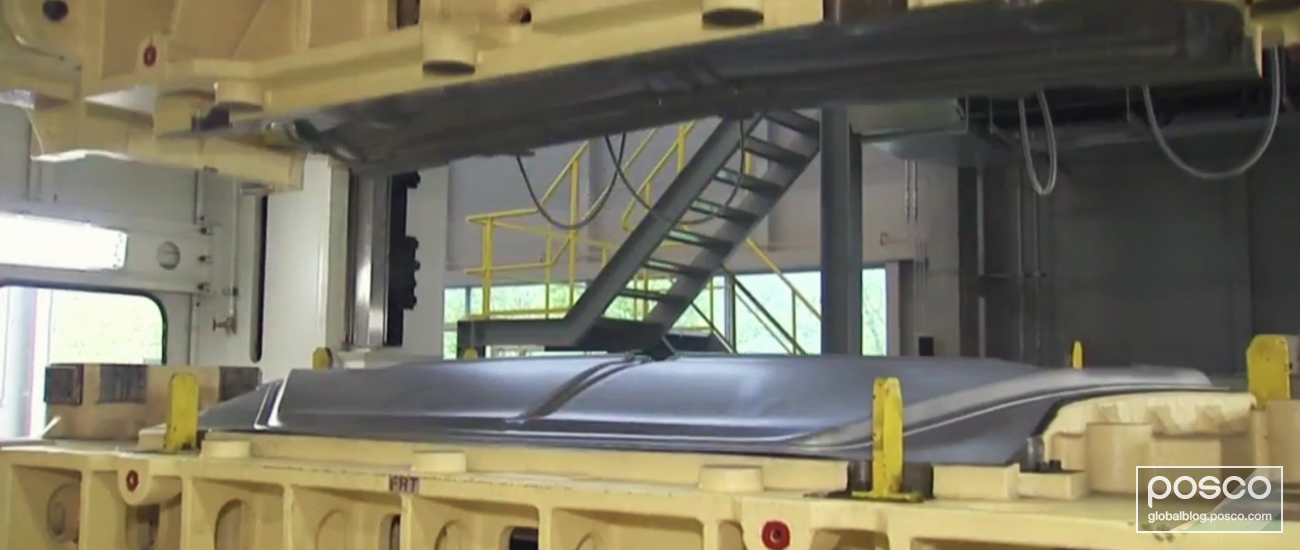The average car contains more than 30,000 parts, many of them steel. However, each piece requires different types of steel in order to maximize performance, efficiency, and safety for consumers.
Since the early 20th century, car manufacturers have realized the importance of using specific steel for specific purposes. Henry Souther of the New York Times reported in 1909, “The secret of the use of steel is to put the right steel in the right place.” Until fairly recently, automotive steel mostly consisted of weaker mild steels that were affordable and easy to form into parts, but innovations in advanced high-strength steels (AHSS) have given automakers more options when designing vehicles.
Today’s automakers and parts manufacturers must consider several properties of the steel they are using: formability, crashworthiness, and durability. Each plays an important role in how the car is made and how the car performs over time and during impact. Below we take a look at these criteria and why each is important for manufacturers when designing a car and its parts.
Formability in Manufacturing
Formability is a key aspect to any automotive material. If a part cannot be made, it cannot be used. Typically, to make steel stronger, automakers had to make sacrifices in weight and formability, and if manufacturers needed a material with more ductility they were forced to give up strength.
The first generation of advanced high-strength steels (AHSS) increased strength while decreasing weight, giving automakers the opportunity to use thinner steel sheets. However, as the steel became stronger it lost formability, making it difficult to mold into parts.
Development of the second generation of AHSS focused on improving formability and elongation; however, its commercial use was limited due to its high cost and tendency to produce delayed cracking at room temperature.
With the new third-generation AHSS, like POSCO GIGA STEEL, steel producers have been able to bridge those gaps by producing steel that is formable, strong, and durable.
While the average car built in 1975 utilized just 3.6% medium and high strength steels, by 2007 that percentage had increased by more than 230% in large part because the practical uses of AHSS have expanded.
Crashworthiness is Key for Safety
Crashworthiness is one of the most important elements to consider when designing automobiles because it is directly linked to the safety of passengers. The crashworthiness of a car is affected by many things including its structural build, safety devices, and materials.
While crash tests of full vehicles are often performed when developing a new car, crash tests of automotive parts are not carried out as often. To bridge this gap, POSCO developed its own crash test simulation for auto parts using high-speed compression and bending.
Crashworthiness criteria such as energy absorption & fracture, collapse mode, reaction force, and mean load is evaluated to provide reference data for car design. With these tests, POSCO is able to provide dynamic material data to its customers in order to propose the most appropriate steel solutions that maximize safety for passengers.
SsangYong Motor designed the new G4 Rexton SUV with a body frame that contains 63% POSCO GIGA STEEL. This is the highest ratio ever achieved in a body frame design and helps ensure significant levels of strength and safety for consumers. In the video below, watch as the SUV goes through various safety tests showing its crashworthiness and durability.
Durability to Prevent Fatigue Failure
The durability of parts is a critical factor to consider in vehicle design as their complicated components are subject to a wide array of complex stresses. In cars, material fatigue due to repeated mechanical loading can lead to the damage of critical components. Also, as vehicles are mobile machines, they are subject to even more unpredictable degrees of loading that can amplify the effects of fatigue on their parts. Moreover, because fatigue failure is often abrupt and difficult to detect, material providers must work to improve durability and ensure longer fatigue life.
“90% of the failures which occur in engineering components can be attributed to fatigue.”
– TR Gurney, Fatigue of Welded Structures
POSCO works with customers to provide accurate durability analysis for each of its products. Through extensive testing with various steel types, specimen shapes, and welding conditions, POSCO is able to provide in-depth testing results requested by customers.
POSCO also works with customers through its Solution Marketing 2.0 program that helps optimize the design and production process of each part – helping ensure that durability performance meets the customer’s needs.
Parts that require higher durability such as the CTBA (Coupled Torsion Beam Axle), wheel, engine cradle, lower control arm and stabilizer bar are interlinked with the fatigue data of POSCO steel. This provides the results of the durability analysis in order to suggest the most appropriate steel type for the manufacturer. Furthermore, POSCO supports joint research with customers for the design, manufacturing, and durability evaluations of its parts. POSCO also analyzes the causes of fatigue failure through SEM imaging of fatigue fracture surfaces, measurements of surface roughness, and measurements of strain rate and residual stress.
Today’s automakers must consider these properties during the design and manufacturing stages in order to find the right steel for each component. POSCO is committed to working with its automotive customers to ensure that the right steel solution is used for the right part – helping to find the right balance between formability, crashworthiness, and fatigue life.


